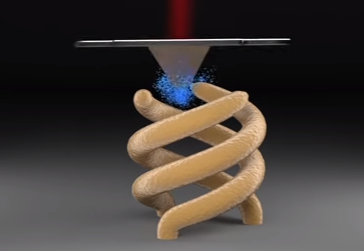FluidFM stands for fluidic force microscopy, and involves the use of a pipette to deposit a metallic solution, which is then solidified by an electrical charge. It enables the 3D printing of complex structures on a micrometer level, including difficult-to-print geometries such as overhangs. In recent months, Cytosurge and ETH Zurich have been working on moving the technology out of the laboratory and making it more consumer-friendly.
“The original technology, the FluidFM is actually a micro-channeled AFM (atomic force microscopy) which does allow to dispense micro fluidics in a defined way (therefore the name FluidFM ~ fluidic force microscopy),” Edgar Hepp, Business Developer for Cytosurge, tells 3DPrint.com.
“This microfluidics dispense technology did not change – we are still dispensing liquids in the femtoliter scale throughout hollow AFM cantilevers – therefore we are also using the same name (FluidFM) to describe the technology. However, the ability to print metals direct out of an aqueous solution is a new process we are continuously improving and also, optimizing the machine for.”
The FluidFM µ3Dprinter offers a print area of 100 x 70 mm, and a print volume of 200 x 200 x 200 µm. Print resolution is ≤ 1 µm. Unlike some other nanoscale 3D printing technologies, the printer allows the user to monitor the printing process; the acting forces on the printing tip can be measured and used as feedback to show which areas of the object have already been 3D printed. Cytosurge describes it as “a micro direct metal 3D printer with in situ printing process control.”
The FluidFM system includes several components: the 3D printer itself, plus a FluidFM µ3D Printer Controller, FluidFM Operator Software, FluidFM Microfluidics Control System, and FluidFM Ion Control Unit.
“3D print and industry 4.0 are two megatrends of the years to come. In many industrial branches there is therefore a growing need for continuing miniaturization and customized mass production as well as the aspiration for ever shorter development and production cycles,” Hepp tells us.
“Thus, the new 3D print technology based on FluidFM comes at exactly the right time. It offers interesting possibilities to increase efficiency as well as an economical approach to new fields of application.”
You can learn more about the FluidFM µ3D Printer here. Discuss in the FluidFM forum at 3DPB.com.
[Images/Video: Cytosurge]
